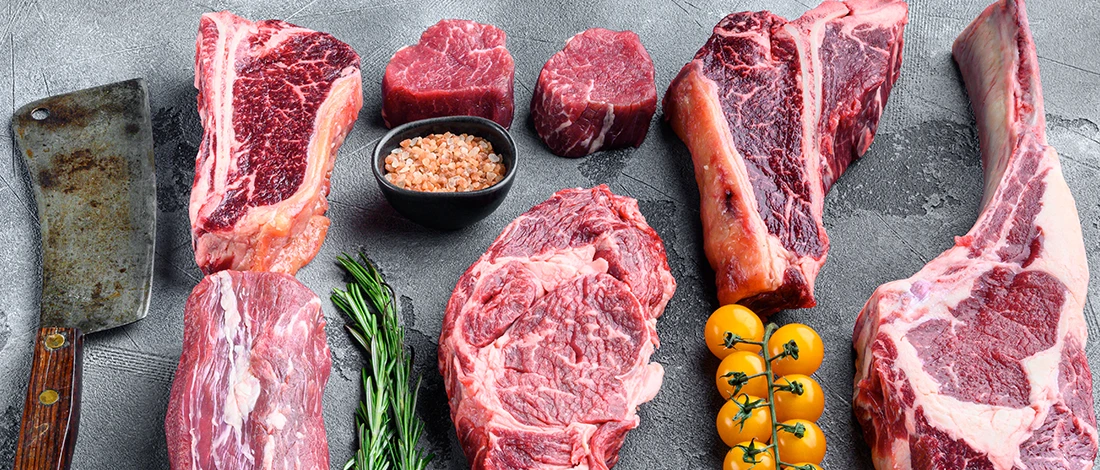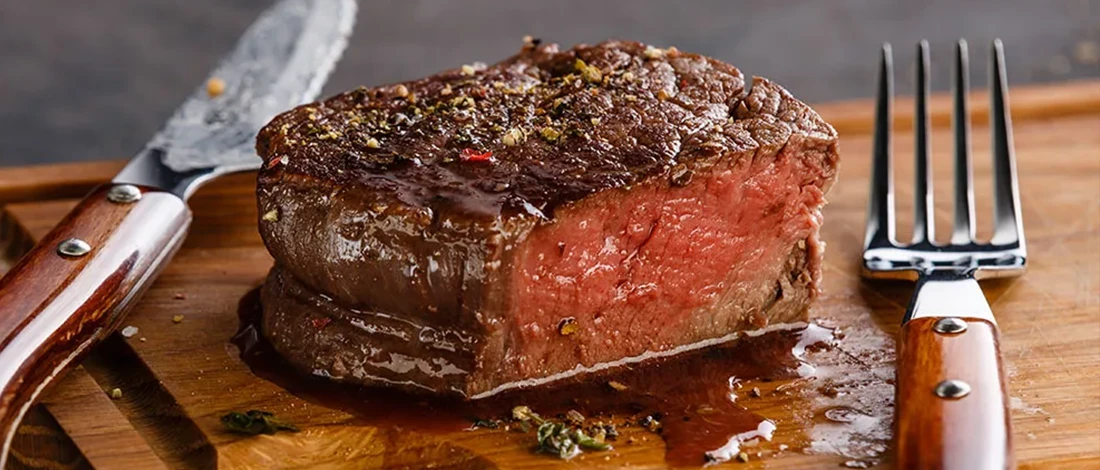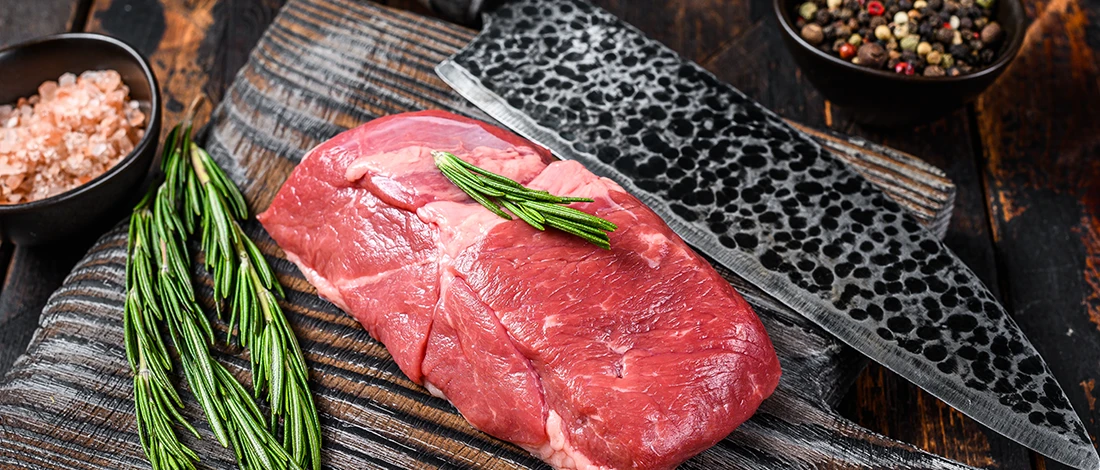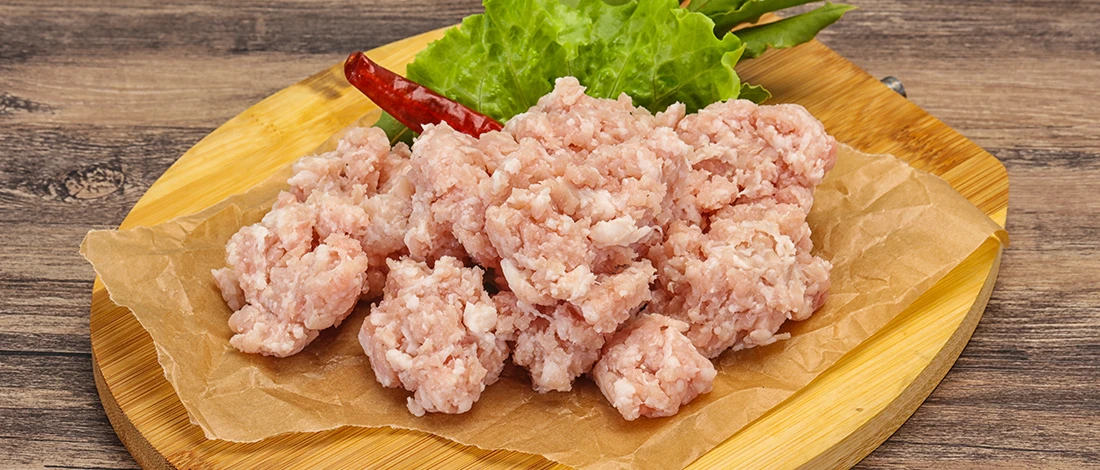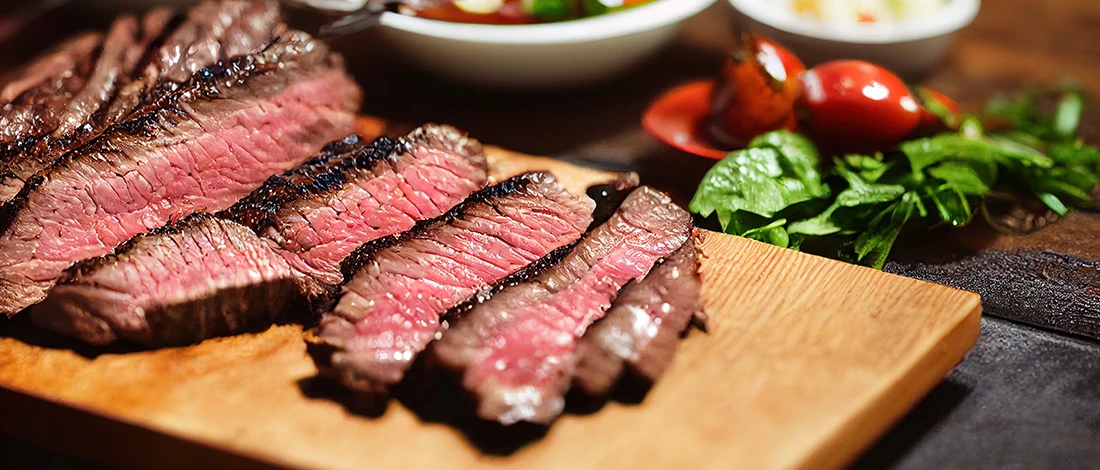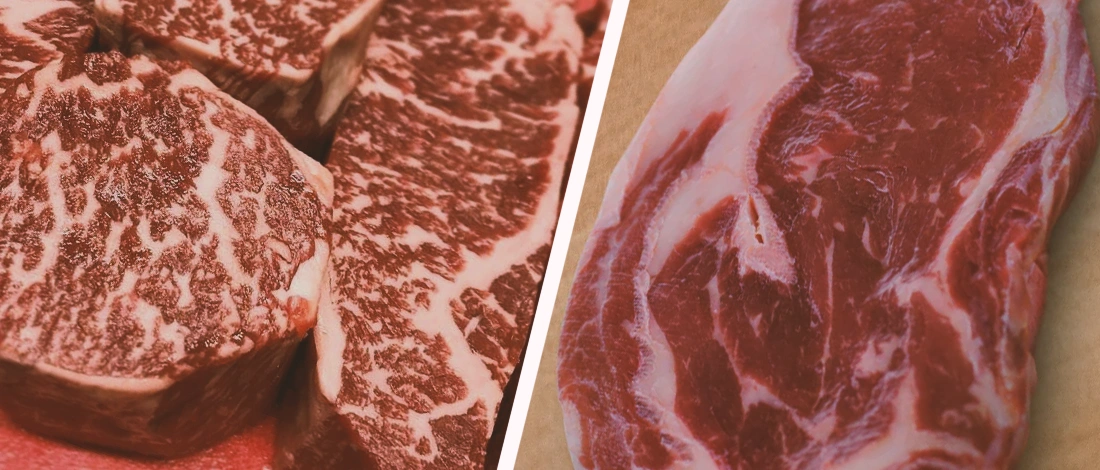As a dedicated carnivore, I always have red meat, like beef, as a staple in my diet. However, North American bison steak has also played a prominent role in my kitchen over the past two years.
At Carnivore Style, we’re passionate about exploring different meats to help you enjoy variety and nutrition in your carnivore lifestyle.
I wanted to know how these two types of meat differ in terms of texture, preparation methods, and nutritional profile.
So, I invested countless hours in research, consulting with experts and my local butcher, and drawing from my extensive experience working with clients seeking healthier eating habits.
Here is what I have found.
Quick Summary
- Bison and beef have a similar nutrition profile, though grass-fed bison has less fat than lean beef.
- Bison tastes a lot like beef, but some may find it sweeter or gamier.
- Bison are often raised more humanely and sustainably than beef.
- Buying from a reputable source will ensure you get the freshest ingredients for your meal. Here's my review of the best bison delivery services.
Bison vs. Beef: Health and Nutrition

One of the reasons I adhere to the carnivore lifestyle is because I know properly raised meats are extremely healthy.
Both bison and beef come from large grazing animals, but they have some differences in their nutritional profiles that make buffalo the healthier alternative.
Here are the health facts on this red meat as reported by the U.S. Department of Agriculture (USDA):
Bison Nutrition (top round):
- Calories: 122 kcal
- Protein: 23.3 g
- Fat: 2.43 g
- Carbohydrates: 0 g
- Saturated fat: 1.04 g
- Iron: 2.66 mg
- Potassium: 390 mg
- Zinc: 2.92 mg
- Cholesterol: 65 mg
Beef Nutrition (top round):
- Calories: 124 kcal
- Protein: 23.6 g
- Fat: 3.26 g
- Carbohydrates: 0 g
- Saturated fat: 0.924 g
- Iron: 2.35 mg
- Potassium: 309 mg
- Zinc: 3.78 mg
- Cholesterol: 61 mg
As you can see, these two kinds of red meat have similar health benefits in many respects. Bison meat is leaner and contains more potassium and iron than beef [1]. However, this animal is lower in zinc.
The relatively large difference in fat levels is because bison are grass-fed, while cattle can be grain-fed. Buffalo yields a leaner product with less total fat, but they do have more cholesterol.
Beef has marginally less saturated fat, but bison has fewer calories [2].
There are also a few differences in the B vitamins found in each. Bison has more folate, thiamin, and riboflavin, but beef has more significant niacin and vitamin B-6 levels.
Bison’s nutritional profile boasts more conjugated linoleic acid (CLA) than beef cattle, pork, chicken, and salmon.
Nutrition research shows these compounds will lower atherogenic risk and are good for heart health.
Overall, the bison wins the health competition. The lower fat content with the same amount of protein and calories makes bison healthier than beef, though both can be part of a healthy diet.
Also Read: Ground Turkey vs Ground Beef
The Differences in Farming Methods between Bison and Beef
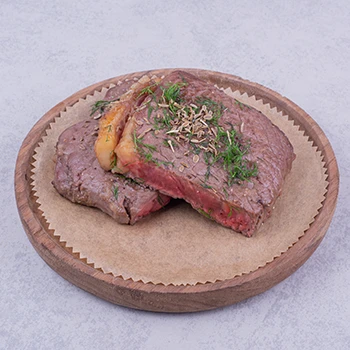
One of the most notable differences between these two types of meat is how they are farmed.
Bison are grass or hay-fed and generally are wild game or pasture-raised on the Great Plains. They are not given antibiotics or growth hormones and are free-range for most of their lives.
This can make buffalo a healthier and more natural option than cattle raised on large commercial farms. In contrast, these cattle can be grain-fed and given antibiotics or growth hormones to accelerate their growth.
In this way, eating bison edges beef out as the healthier choice.
Cattle are required by the USDA to be inspected for wholesomeness and safety, but bison are not. Buffalo can be examined under the USDA's voluntary federal inspection program, but it is not mandatory.
So, purchasing your meat from a reputable source that adheres to strict standards of quality is vital.
Also Read: Is USDA Prime Beef Grass-Fed?
The Differences in Appearance and Flavor
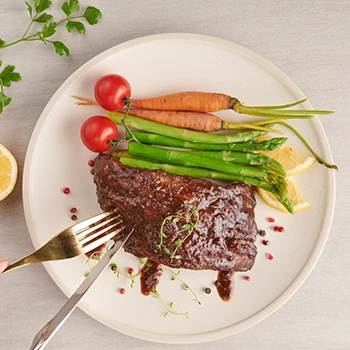
Bison and beef are red meats that are visually similar and can sometimes be mistaken for one another.
Both are reddish-brown, but bison muscle is slightly darker due to the lack of marbling. This makes the meat appear darker and richer in hue.
Additionally, after cooking, bison has a more distinct grain than beef because it contains less fat marbling throughout the cut of meat.
That said, beef’s marbling may make it a more tender meat.
"Bison is very lean and lacks fat marbling, so care should be taken not to overcook it."
- U.S. Department of Agriculture
The flavor of each of these meats varies based on the following:
- How it was raised
- The diet it was fed
- How long it was aged
Though the animals have comparable taste profiles, buffalo may have a sweeter and richer flavor than traditional cuts of steak or ground beef.
On the other hand, beef can have a milder (although similar) flavor if it is grain-fed and isn’t exposed to the elements that bison experience on the range.
Which One is More Expensive: Bison or Beef?
Bison is more expensive than beef because of its limited supply. The extra cost is because there are far fewer ranchers raising bison than cows, meaning less product reaches the market each year.
Bison tend to be raised in smaller herds on less land, making them more expensive to raise than their cattle counterparts.
Related Articles:
FAQs
Is Bison Meat Hard to Digest?
No, bison meat is not hard to digest. Because bison contains less fat than beef, it provides an even smoother digestion process.
Why Isn't Bison More Popular?
Bison isn't more popular primarily because of the limited supply. There are far fewer bison than cows, making it harder to access enough buffalo meat for widespread distribution to your local grocery store.
Can You Grill Bison Like Beef?
Yes, you can grill bison like beef with just a couple of differences. You can overcook bison since it is naturally leaner. You generally cook bison faster and over lower heat than beef. However, bison steaks, bison burgers, and ground bison can have a similar preparation method as grass-fed beef or other ground meat.
At Carnivore Style, we believe understanding your meat helps you make better choices for your health and taste. Check out our other guides and recipes to keep your carnivore meals interesting and nutritious.
References:
- https://fdc.nal.usda.gov/fdc-app.html#/food-details/172601/nutrients
- https://fdc.nal.usda.gov/fdc-app.html#/food-details/173996/nutrients


